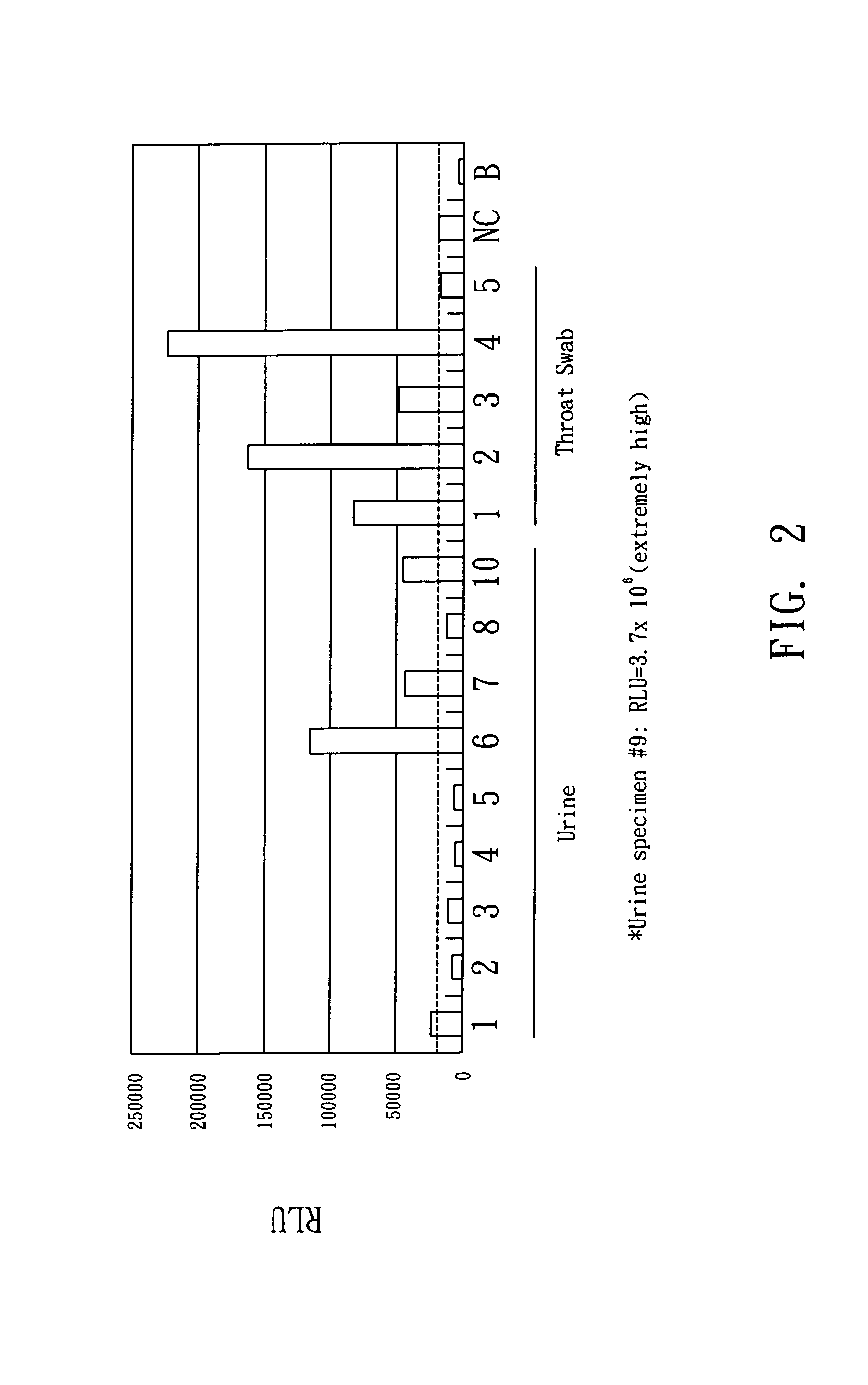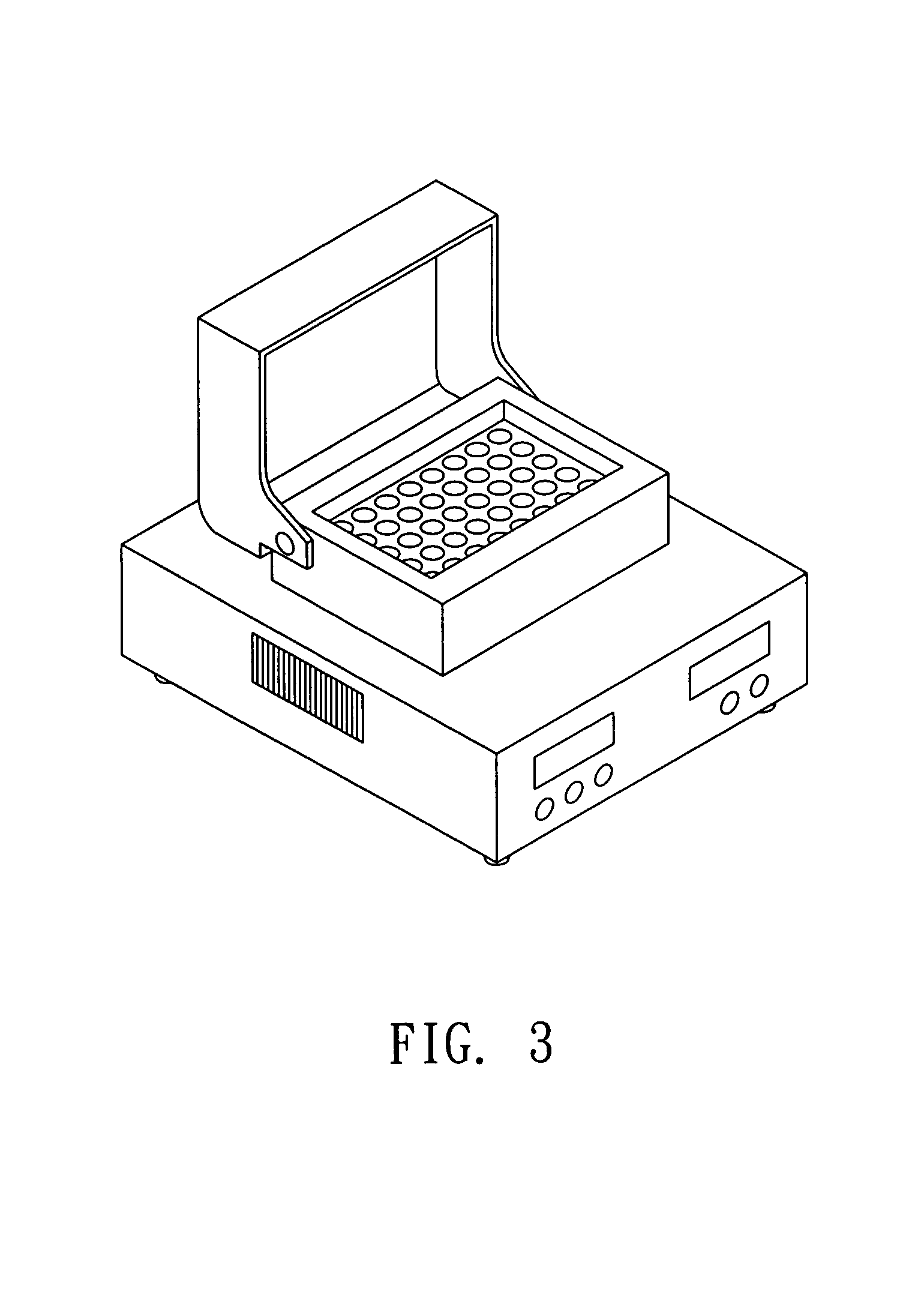Assay system and methods for detecting SARS-CV
a technology of sars coronavirus and assay system, which is applied in the field of assay system and methods for detecting sars coronavirus, can solve the problems of false positive, negative test cannot rule out the presence of sars virus in patients, and lack of specificity of existing pcr tests
- Summary
- Abstract
- Description
- Claims
- Application Information
AI Technical Summary
Benefits of technology
Problems solved by technology
Method used
Image
Examples
example 1
[0138]SARS cDNA (SARS-1 and SARS-2) were PCR-amplified and proofreading by MagProbe specified for an oligonucleotide sequence that is inside the amplified fragment, F1R1. FIG. 1 clearly indicates that there is no noise from negative controls, both M. tuberculosis genomic DNA and ddH2O.
example 2
[0139]Clinical specimen from urine and throat swab were assayed by the assay system of the invention. As indicated in FIG. 2, 40% urine samples collected at various timing were identified to be SARS-CV positive and 80% of swab samples from one of the same patient were SARS-CV positive.
example 3
[0140]Clinical specimen from urine of healthy healthcare employee were assayed by the assay system of the invention. It was clearly indicated in FIG. 4 that there are no SARS-CV can be detected from the urine of healthy healthcare employee.
Discussions
[0141]Eradication of SARS-CV from human community may not be achieved unless a solid strategy of vaccination is timely and completely carried out. Therefore, dependable diagnoses have to be strictly enforced from time to time. Among so many different diagnostics, direct detection of infected viruses would be the first line of choice, i.e. a molecular device that can directly detect viral genome should be applied. In the other hand, sample analysis is also a key to uncover the infection that may precisely detect the virus, delineate the severity and the prognosis of the disease. To detect SARS-CV from suspected patient urine is just one of the good example that can identify SARS-CV, decrease the risk of sampling, describe the severity an...
PUM
| Property | Measurement | Unit |
|---|---|---|
| time | aaaaa | aaaaa |
| incubation time | aaaaa | aaaaa |
| magnetic force | aaaaa | aaaaa |
Abstract
Description
Claims
Application Information
 Login to View More
Login to View More - R&D
- Intellectual Property
- Life Sciences
- Materials
- Tech Scout
- Unparalleled Data Quality
- Higher Quality Content
- 60% Fewer Hallucinations
Browse by: Latest US Patents, China's latest patents, Technical Efficacy Thesaurus, Application Domain, Technology Topic, Popular Technical Reports.
© 2025 PatSnap. All rights reserved.Legal|Privacy policy|Modern Slavery Act Transparency Statement|Sitemap|About US| Contact US: help@patsnap.com



